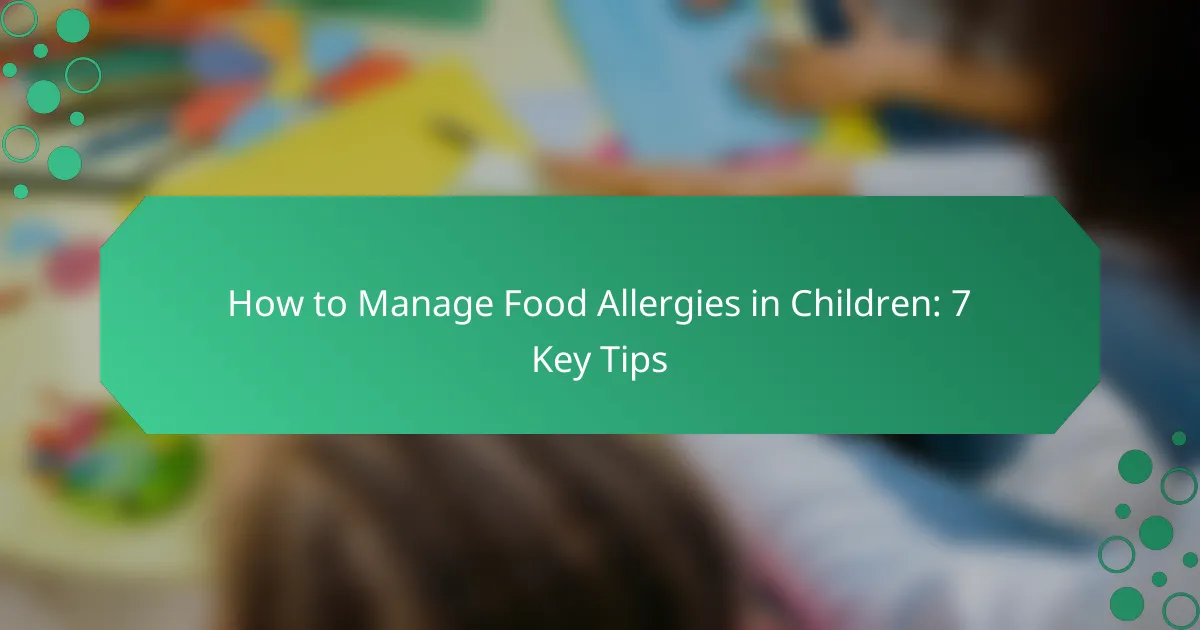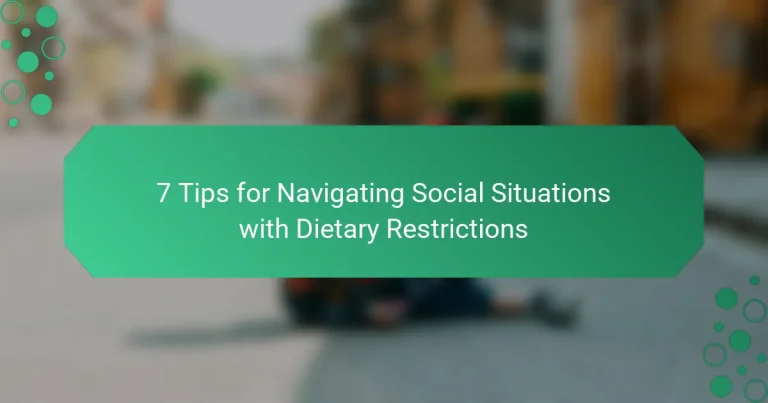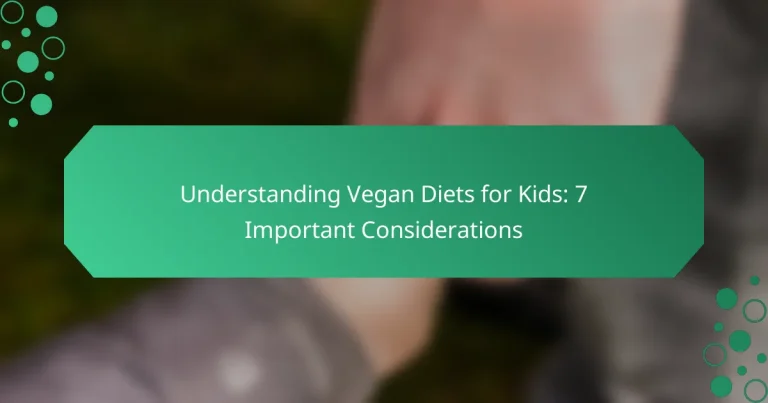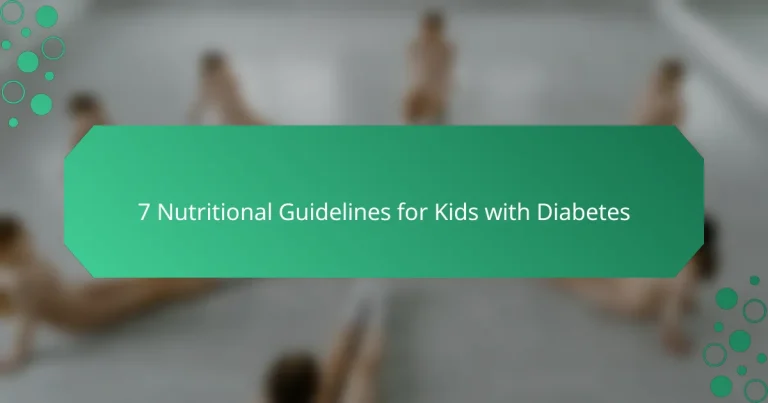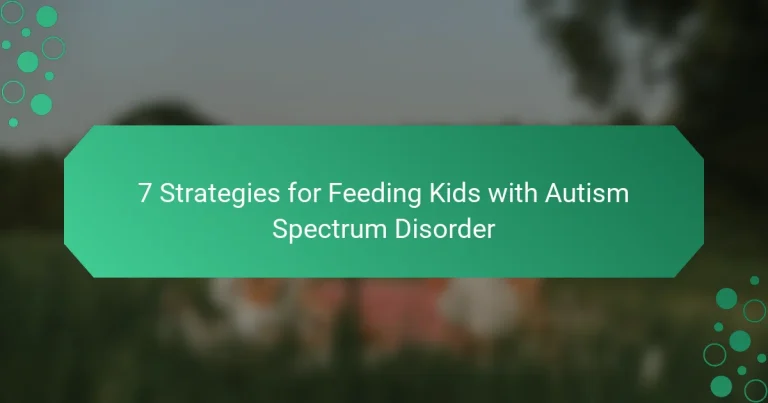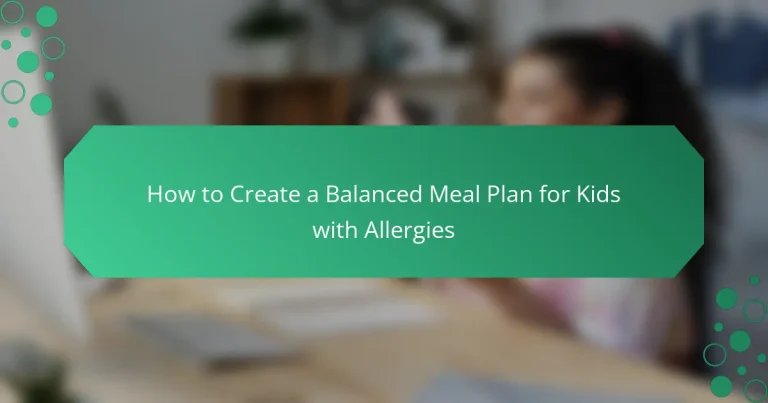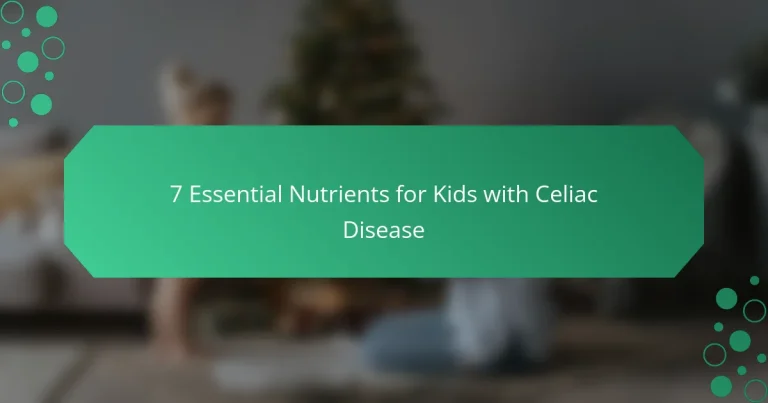How to Manage Food Allergies in Children: 7 Key Tips
Managing food allergies in children requires careful attention and proactive strategies to ensure their safety and well-being. By strictly avoiding allergens, creating emergency action plans, and planning meals thoughtfully, parents can significantly reduce the risk of allergic reactions. Early identification of food allergies through observation and professional consultation is essential for effective management and prevention of severe incidents.
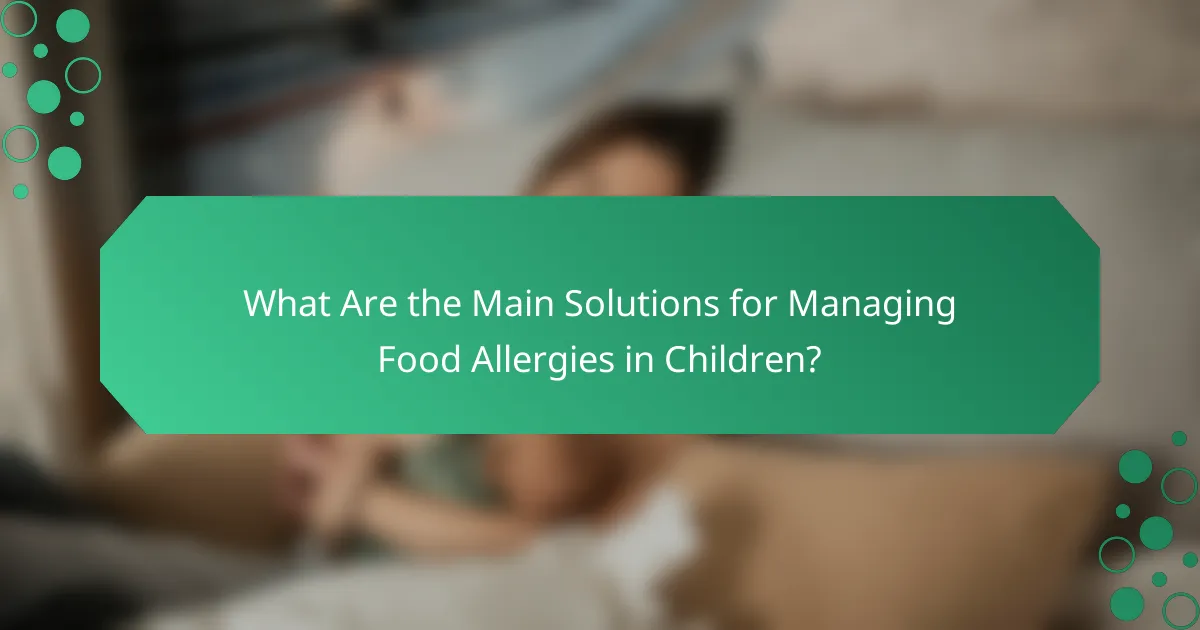
What Are the Main Solutions for Managing Food Allergies in Children?
Managing food allergies in children primarily involves strict avoidance of allergens, having emergency action plans, and ensuring proper meal planning. These strategies help minimize exposure to allergens and prepare for potential allergic reactions.
Strict avoidance of allergens
The most effective way to manage food allergies in children is through strict avoidance of known allergens. This means reading food labels carefully, asking about ingredients when dining out, and educating children about what to avoid. Parents should create a safe environment by eliminating allergenic foods from the home.
It’s also essential to communicate with schools and caregivers about the child’s allergies. Providing them with a list of safe and unsafe foods can help prevent accidental exposure.
Emergency action plans
Having an emergency action plan is crucial for children with food allergies. This plan should outline the steps to take in case of an allergic reaction, including the use of epinephrine auto-injectors if prescribed. Parents should ensure that caregivers and teachers are trained on how to recognize symptoms and administer medication.
Regular drills can help everyone involved feel confident in their ability to respond quickly. Keeping a copy of the action plan in accessible locations, such as the child’s backpack or school records, is also advisable.
Allergy-friendly meal planning
Allergy-friendly meal planning involves creating meals that avoid allergens while still being nutritious and appealing. Parents can focus on whole foods like fruits, vegetables, grains, and proteins that are less likely to cause reactions. Meal prepping can save time and reduce the risk of accidental exposure.
Consider using alternative ingredients, such as almond milk instead of cow’s milk or gluten-free grains instead of wheat. Resources like allergy-friendly cookbooks or websites can provide inspiration and recipes.
Education for caregivers
Education for caregivers is vital in managing food allergies effectively. All adults involved in the child’s care should understand the severity of the allergies and how to prevent exposure. This includes training on reading labels, recognizing symptoms, and knowing how to respond in emergencies.
Regular workshops or informational sessions can help keep caregivers informed about the latest guidelines and best practices. Sharing resources and experiences can foster a supportive community around the child.
Regular consultations with allergists
Regular consultations with allergists are important for monitoring a child’s food allergies. These specialists can provide updates on the child’s condition, recommend testing, and suggest new management strategies. They can also help determine if the child may outgrow certain allergies over time.
Scheduling annual check-ups or more frequent visits if symptoms change can ensure that the child receives the best possible care. Keeping a detailed record of any allergic reactions can aid in these consultations.
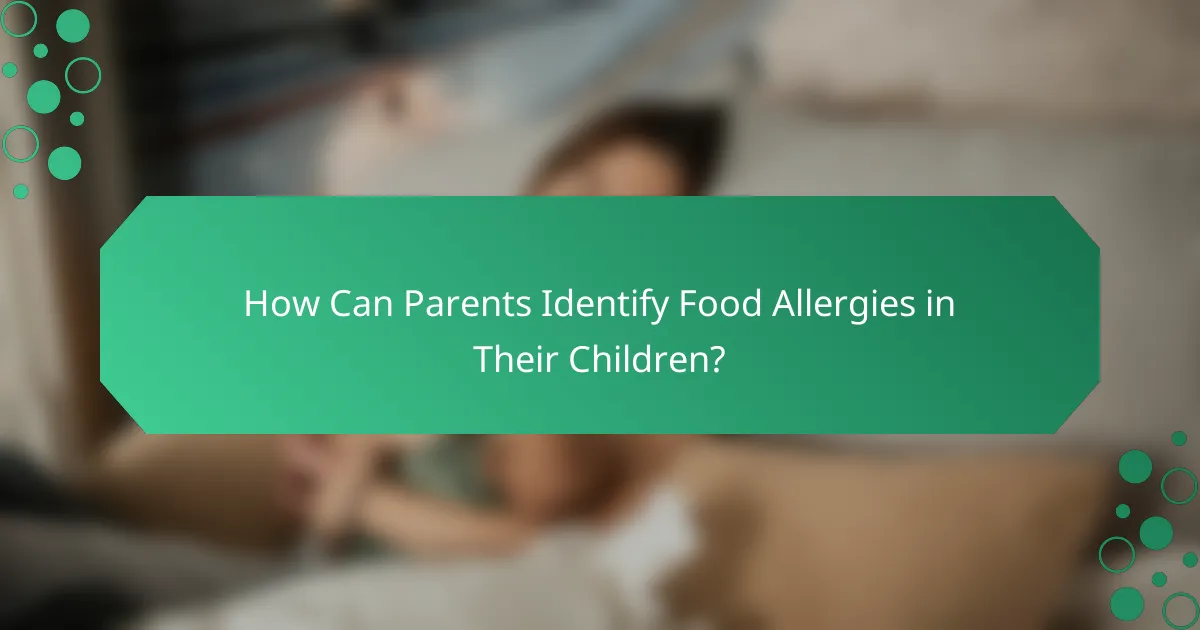
How Can Parents Identify Food Allergies in Their Children?
Parents can identify food allergies in their children by observing reactions to specific foods and consulting healthcare professionals. Early identification is crucial for effective management and prevention of severe allergic reactions.
Allergy testing methods
Allergy testing typically involves skin prick tests or blood tests to determine sensitivities to various allergens. Skin prick tests involve exposing the skin to small amounts of allergens and observing for reactions, while blood tests measure specific antibodies in the bloodstream.
Consulting an allergist can help parents choose the most appropriate testing method based on their child’s symptoms and medical history. It’s important to follow up with a healthcare provider to interpret results accurately and discuss potential next steps.
Common symptoms to watch for
Common symptoms of food allergies in children can include hives, swelling, gastrointestinal issues, and respiratory problems. Reactions may occur within minutes to a few hours after consuming the allergenic food.
Parents should be vigilant for signs such as difficulty breathing, vomiting, or severe abdominal pain, as these may indicate a serious allergic reaction. Keeping a food diary can help track symptoms and identify potential triggers, making it easier to communicate with healthcare providers.
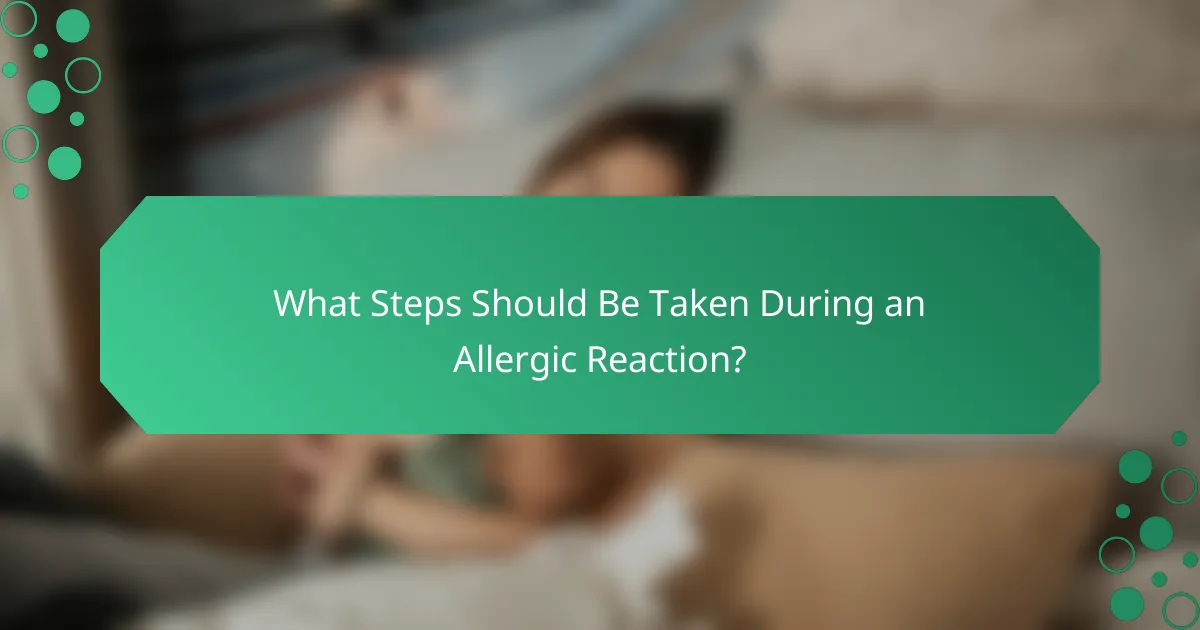
What Steps Should Be Taken During an Allergic Reaction?
During an allergic reaction, especially a severe one, swift action is crucial to ensure the child’s safety. Recognizing symptoms and responding appropriately can significantly reduce the risk of serious complications.
Recognizing signs of anaphylaxis
Anaphylaxis is a life-threatening allergic reaction that can occur rapidly. Key signs include difficulty breathing, swelling of the face or throat, hives, rapid heartbeat, and gastrointestinal distress such as vomiting or diarrhea. Parents should be vigilant for these symptoms, especially after exposure to known allergens.
It’s essential to act quickly if you notice these symptoms. The onset can be sudden, often within minutes of exposure, so being prepared and aware is vital for effective management.
Administering epinephrine
If anaphylaxis is suspected, administering epinephrine immediately is critical. Most children with severe allergies should have an epinephrine auto-injector (like an EpiPen) available. Inject the medication into the outer thigh, and hold it in place for several seconds to ensure proper delivery.
Always follow the instructions provided with the auto-injector. If symptoms do not improve within a few minutes, a second dose may be necessary, but consult emergency services for guidance on this step.
Calling emergency services
After administering epinephrine, it’s essential to call emergency services right away. Even if symptoms seem to improve, medical professionals need to evaluate the child, as a second wave of symptoms can occur. Provide clear information about the situation, including the child’s age, symptoms, and any known allergies.
In many regions, such as the United States, calling 911 is the standard procedure. Ensure you have a plan in place for how to reach emergency services quickly, especially if you are in a public place or unfamiliar environment.
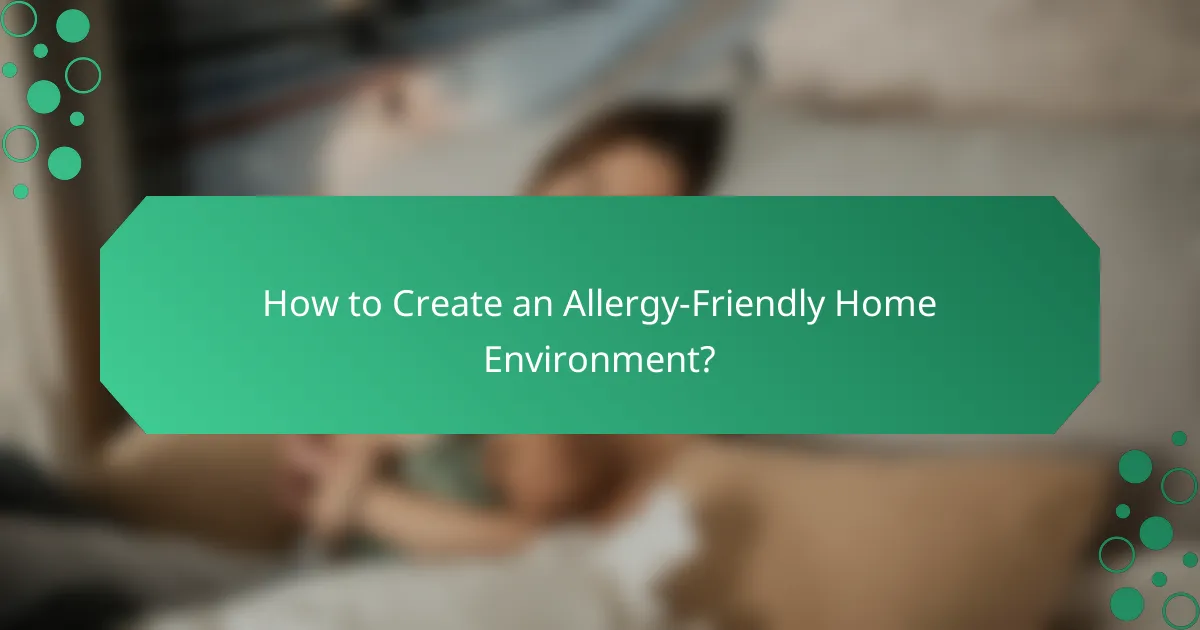
How to Create an Allergy-Friendly Home Environment?
Creating an allergy-friendly home environment involves minimizing exposure to allergens and ensuring safety for children with food allergies. This can be achieved through careful organization, clear communication, and proactive measures.
Labeling food items
Labeling food items is crucial for preventing accidental exposure to allergens. Use clear, bold labels on all food containers, indicating whether they contain common allergens such as peanuts, tree nuts, dairy, or gluten.
Consider using color-coded labels for different allergens to make identification easier for all family members. This visual aid can help children learn to recognize safe versus unsafe foods quickly.
Safe storage practices
Implementing safe storage practices is essential for maintaining an allergy-friendly home. Store allergenic foods in separate areas from safe foods to prevent cross-contamination. Use airtight containers to minimize the risk of accidental exposure.
Regularly check expiration dates and discard any expired items to ensure that all food is safe for consumption. Additionally, keep a dedicated shelf or section in the pantry for allergy-safe snacks and meals.
Educating family members
Educating family members about food allergies is vital for creating a supportive environment. Ensure that everyone understands the specific allergies and the importance of avoiding cross-contamination.
Hold regular family discussions to reinforce safe practices, and consider involving children in the learning process. Teaching them how to read labels and recognize safe foods empowers them to make informed choices.
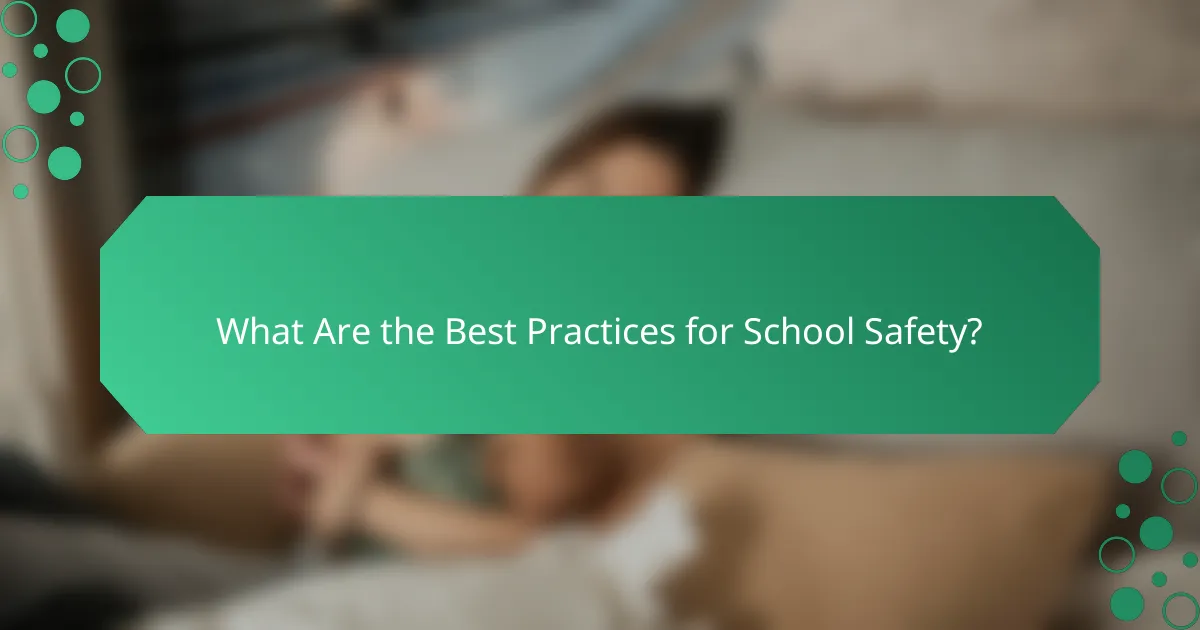
What Are the Best Practices for School Safety?
Managing food allergies in children at school requires clear communication, tailored health plans, and proper training for staff. Implementing these best practices ensures a safer environment for children with allergies.
Communicating with school staff
Effective communication with school staff is essential for managing food allergies. Parents should inform teachers, nurses, and cafeteria staff about their child’s specific allergies and any necessary precautions. Regular updates and open lines of communication can help address any concerns that may arise.
Consider providing written documentation, such as allergy action plans, to ensure everyone is on the same page. This can include details about symptoms, emergency contacts, and treatment protocols in case of an allergic reaction.
Creating individualized health plans
Individualized health plans (IHPs) are crucial for children with food allergies. These plans should outline specific dietary restrictions, emergency procedures, and any required medications. Collaborating with healthcare providers and school officials can help create a comprehensive plan tailored to the child’s needs.
Regularly reviewing and updating the IHP ensures it remains relevant as the child grows or if their allergies change. Parents should schedule meetings with school staff at the beginning of each school year to discuss and adjust the plan as necessary.
Training staff on allergy management
Training staff on allergy management is vital for ensuring student safety. Schools should provide training sessions that cover recognizing allergic reactions, proper use of epinephrine auto-injectors, and strategies for avoiding cross-contamination in food preparation areas.
Incorporating allergy management training into staff orientation and ongoing professional development can help maintain awareness and preparedness. Schools may also consider involving parents in training sessions to share their experiences and insights.
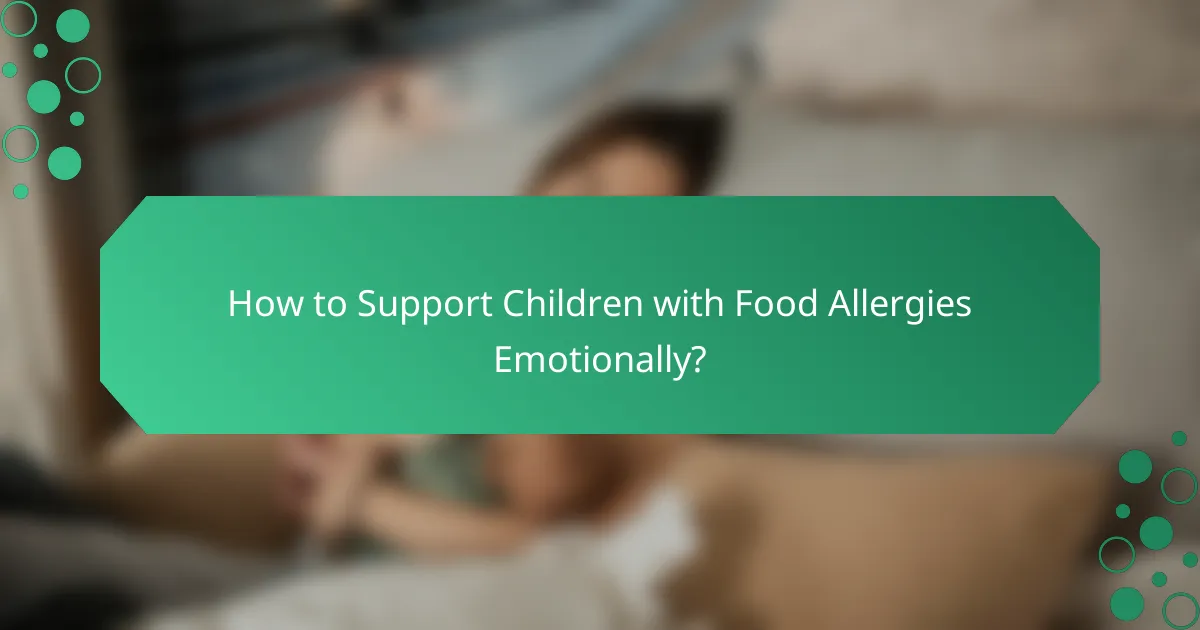
How to Support Children with Food Allergies Emotionally?
Supporting children with food allergies emotionally involves understanding their feelings and providing reassurance. It is crucial to create a safe environment where they feel comfortable discussing their concerns and experiences.
Encourage Open Communication
Fostering open communication allows children to express their feelings about their food allergies. Encourage them to share their fears or frustrations, which can help them feel heard and validated. Regularly check in with them about their experiences, especially in social settings.
Educate About Food Allergies
Teaching children about their food allergies empowers them to manage their condition. Use age-appropriate language to explain what allergies are, how they affect their bodies, and the importance of avoiding allergens. This knowledge can boost their confidence and help them make informed choices.
Involve Them in Meal Planning
Involving children in meal planning can help them feel more in control of their dietary choices. Allow them to participate in selecting safe foods and preparing meals. This engagement not only makes them more aware of their allergies but also encourages healthy eating habits.
Promote Positive Social Interactions
Encourage positive social interactions by helping children navigate situations where food is involved. Discuss strategies for handling parties or gatherings, such as bringing safe snacks or politely declining food. Role-playing these scenarios can prepare them for real-life situations.
Validate Their Feelings
Recognizing and validating a child’s feelings about their food allergies is essential. Let them know that it is okay to feel upset or frustrated. Acknowledging their emotions can help them process their experiences and reduce feelings of isolation.
Seek Professional Support if Needed
If a child struggles significantly with their food allergies emotionally, consider seeking support from a mental health professional. Therapy can provide coping strategies and help them manage anxiety related to their allergies. Look for professionals experienced in dealing with children and allergies.
